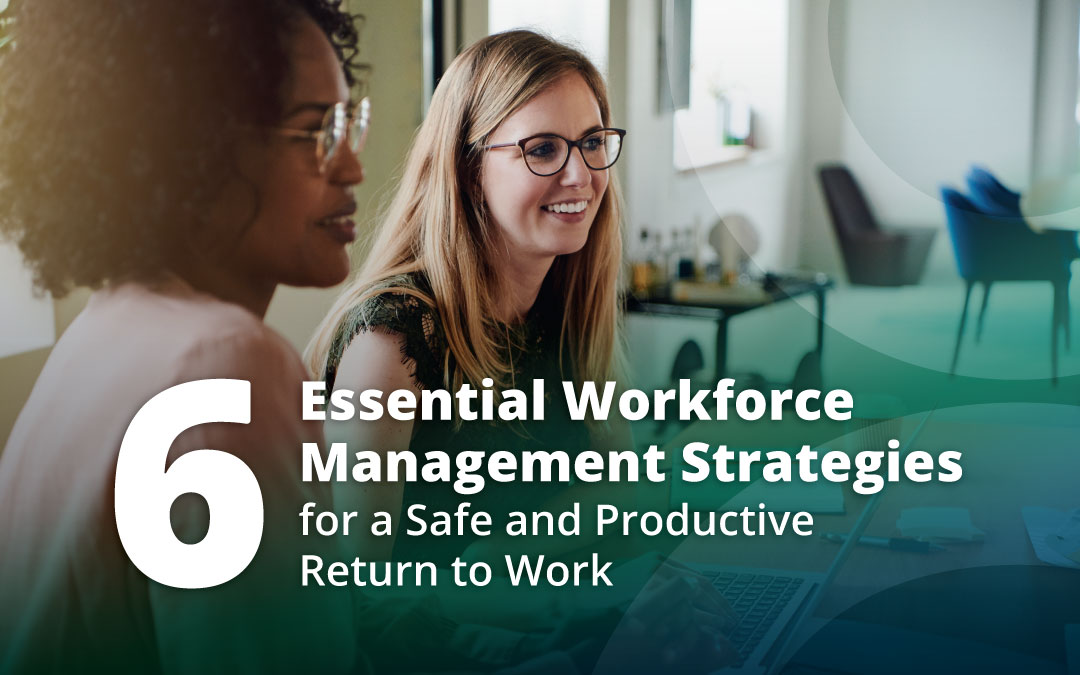Six Questions to Help You Prioritise Which Employees Return to Work

Jill Keelan
Director, Product Marketing
Workers across Australia and New Zealand are slowly returning to offices as both countries have successfully flattened the curve of the COVID-19 pandemic. Australian Bureau of Statistics’ research says the vast majority (86 percent) of working Australians are at least “somewhat comfortable” to physically return to their workplaces.
Many employers are enthusiastic to make up for the lost time while recovering diminished business revenue. Before your employees return to work it is important to plot out a roadmap of what your re-opening journey will look like.
First stop on the map: how and when will you recall your employees? Keep in mind there may be numerous outside factors that could prevent your business from running operations at full capacity. It’s important you ask yourself the following six questions as you evaluate your return-to-work plan:
1. Which roles are essential to operations?
During the re-opening process, you may need to create, pause, or adjust roles to accommodate changes to your operations. Perhaps your business started offering delivery or street pickup, or maybe new product lines have been created to fulfill a gap in the supply chain. You may even need to create a new role for extensive cleaning and sanitising procedures.
2. What skills do my employees need to have?
To effectively fill these new or changing roles, identify the skills required to perform each responsibility and mine your existing roster of employees—active or inactive—to find individuals that fit the criteria or can be trained to do so. You don’t need the added burden of recruiting and onboarding new employees as employee retention will be the key to a successful execution.
6 Essential Workforce Management Strategies for a Safe and Productive Return to Work
Download this eBook to learn 6 essential workforce management strategies that will help you design a safe and structured return-to-work plan.
3. When is the right time to re-open?
For many businesses, it might not make sense to open multiple locations if the cost to operate at a significantly lower occupancy limit will outweigh revenue potential. First, try a soft opening or A/B testing across fewer locations to get a better feel of business performance before opening at a broader level.
4. What will my hours of operation be?
If you are expectant that business performance will provide lower results than historically recorded, you’ll want to rethink your operating hours to safeguard your labor spend. Ask yourself: will there be enough demand for my product or services to justify re-opening with my original hours of operation?
5. What does availability look like for my employees?
You’ll want to get a clear understanding of your employees’ availability, preferences, and current situation. Some might not have access to childcare, some might have underlying health concerns that could prevent their on-site presence, and some may be caring for sick family members. For employees with more flexibility, be sure to ask whether they are willing to take on a new role, work a different location, or adjust their shift hours to accommodate business needs.
6. How can a Workforce Management solution help?
WorkForce Suite, in place can help you make smarter and more strategic staff planning decisions. Prioritising your staff for a phased re-opening is just one stop on the long and winding road toward the “new normal.” For an extensive guide that will help you plan your entire return-to-work journey, download our latest eBook, 6 Essential Workforce Management Strategies for a Safe and Productive Return to Work.

